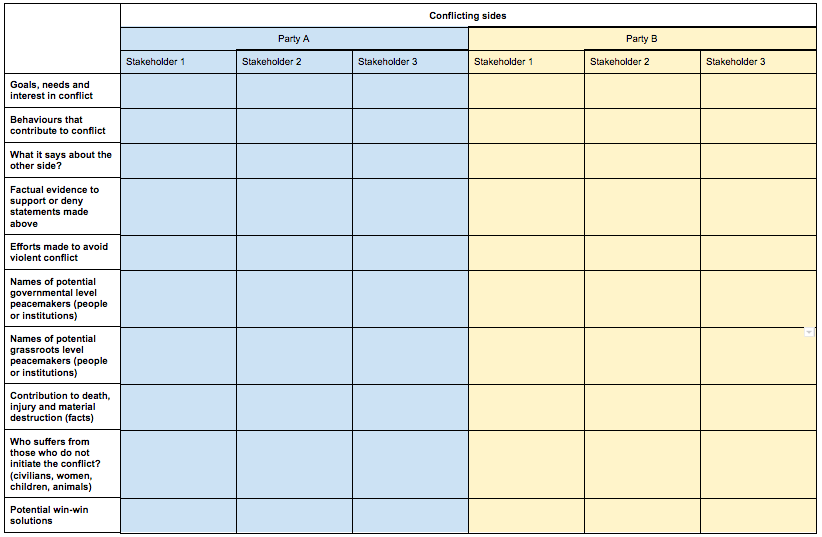War journalism is a well known and historical profession. Images of reporters risking their lives to report from conflict zones are known to many. However, this type of journalism is often propaganda like in delivery, focuses on the violence (and sometimes glamorises it), focuses on the suffering of one side and the actions of elites, and focuses on one side achieving victory. This type of journalism sells, but it does the world a disservice.
Far better is the notion of peace journalism. Here, reports might focus on the causes of conflict, the contributions of both sides, aims to expose the truth about all stakeholders, focuses on win-win solutions and focuses on everyday people.
Below, I have attempted to create a matrix (adapted from the work of Galtung, Jake Lynch and Annabel McGoldrick) that one should be able to fill out if reading a good peace journalism article. You could also fill it out before writing a blog post or article on a conflict. It's a work in progress, so please do let me know what you think! Is it missing anything? What might you change? Is it useful?

A potential matrix to fill out in order to guide the writing of a peace journalism article
(EDIT: The original version of this post had "Side 1" and "Side 2". A friend pointed out that this perpetuates the "us vs them" mentality and suggested party A and party B. Thank you!)